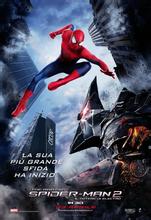Bird said, give me a number, so I earn enough money, back to you, and then we do not have to talk again. It reminds me of the same quarrel with my mom when I was in high school.
Bird and mother quarrel on the fire, pushed open the car door, jumped down. I really understand the urge to hurt myself. Actually, it is not just young people. One year after I even saw a pupil quarreling with his mother, I jumped straight from the tricycle and did not understand the high speed. When the kinetic energy how much heavy down on the ground, fainted, the body still kept trembling. His mother scared, I was shocked.
Now, as a man, I am living in a big city alone and with a seemingly endless debt as my parents were when they were young. I started to comprehend completely, their frustration and anger at that time. I understood how much I was a child when I was young … If I had a child, I would not hesitate to say: No, my father can not buy that toy car for you.
I am deeply grateful to my parents, for more than 20 years for me to do everything. Is it a blessing to have a well-meaning parent – when Bird attacks Mom and says “Have you ever been home, no matter what you wear, you’re blamed by your mom?” Her mother calmly said: “My mother is an alcoholic violent mad.”
Although dreams often can not be fulfilled, it is easy for one’s loved ones to hurt each other deeply and not even know what they have done until it is too late. It was a complete tragedy if Bird fell to his death while getting off the bus, and teenage suicide was a very common social problem. Over the years, have seen jumped after college entrance examination, college graduates jumped from the floor, there are not long ago ZTE jumped middle-aged people. Just a few minutes to die, and many people have to suffer long suffering.
“Lady Bird” is not a popcorn movie, there is no fairy tale, there is no myth, no miracle, no hero, only ordinary and compromise, adolescent impulses and confusion, stampede under the pressure of life, sexual enlightenment and a mess of private life … … What a true history of growth. So trivial, warm, because true, so full of strength.
Wearing a ring of young people, put themselves clean and dressed in suits; temper of adolescents, began calmly in the face of difficulties and misunderstandings, patience to seek reconciliation; young endowed with an inexhaustible energy will soon decline, superficial Carefree into thinking under the pressure of life and calm, small meat will become a bald middle-aged holding a thermos cup will lose a lot of things, but also will have more real.








